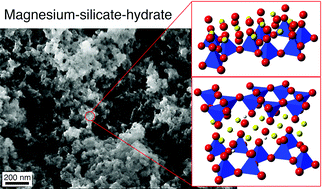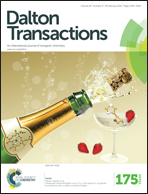Structural characterization of magnesium silicate hydrate: towards the design of eco-sustainable cements†
Abstract
Magnesium-based cement is one of the most interesting eco-sustainable alternatives to standard cementitious binders. The reasons for the interest towards this material are twofold: (i) its production process, using magnesium silicates, brine or seawater, dramatically reduces CO2 emissions with respect to Portland cement production, and (ii) it is very well suited to applications in radioactive waste encapsulation. In spite of its potential, assessment of the structural properties of its binder phase (magnesium silicate hydrate or M–S–H) is far from complete, especially because of its amorphous character. In this work, a comprehensive structural characterization of M–S–H was obtained using a multi-technique approach, including a detailed solid-state NMR investigation and, in particular, for the first time, quantitative 29Si solid-state NMR data. M–S–H was prepared through room-temperature hydration of highly reactive MgO and silica fume and was monitored for 28 days. The results clearly evidenced the presence in M–S–H of “chrysotile-like” and “talc-like” sub-nanometric domains, which are approximately in a 1 : 1 molar ratio after long-time hydration. Both these kinds of domains have a high degree of condensation, corresponding to the presence of a small amount of silanols in the tetrahedral sheets. The decisive improvement obtained in the knowledge of M–S–H structure paves the way for tailoring the macroscopic properties of eco-sustainable cements by means of a bottom-up approach.


 Please wait while we load your content...
Please wait while we load your content...